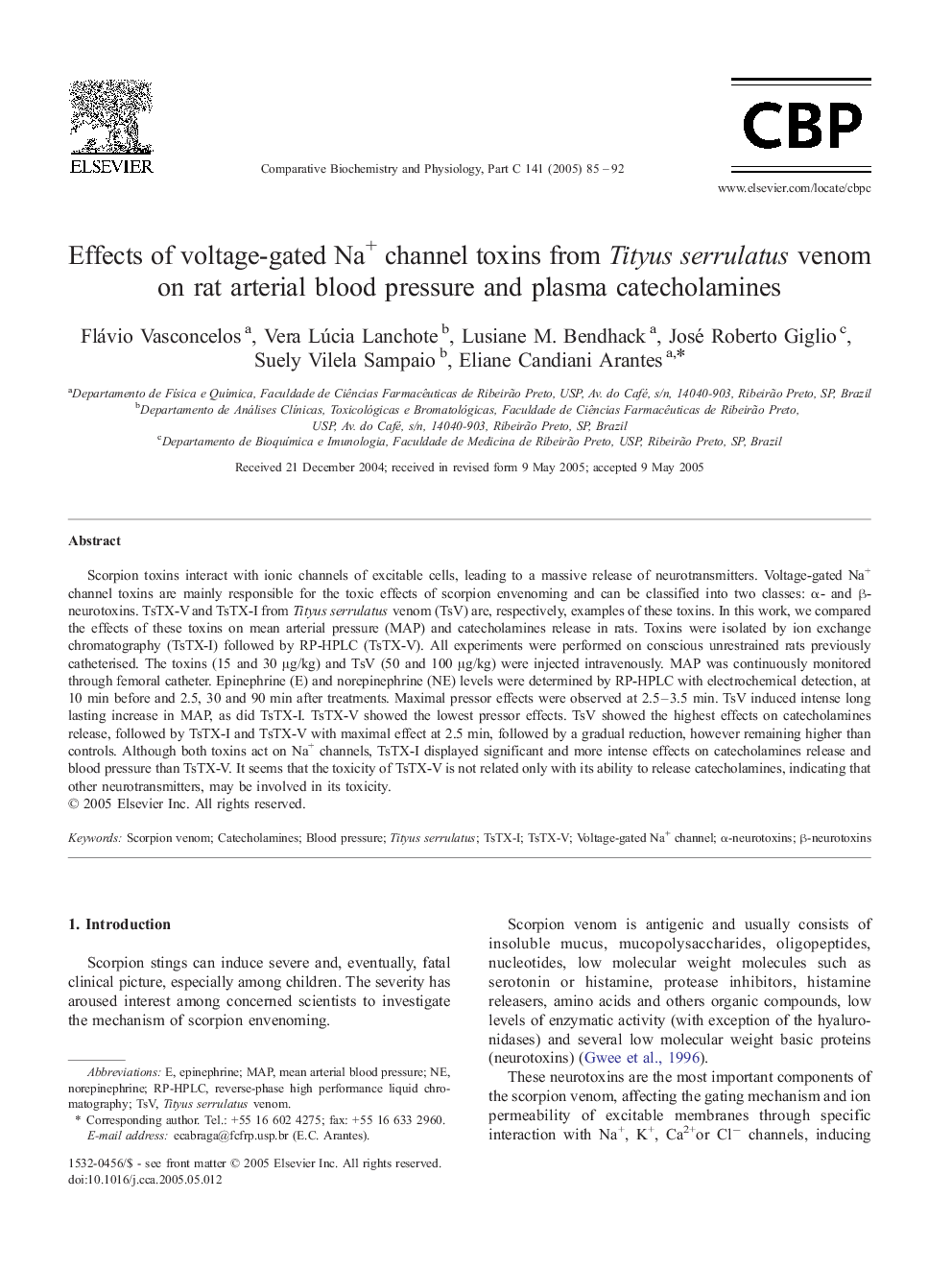| Article ID | Journal | Published Year | Pages | File Type |
|---|---|---|---|---|
| 10821959 | Comparative Biochemistry and Physiology Part C: Toxicology & Pharmacology | 2005 | 8 Pages |
Abstract
Scorpion toxins interact with ionic channels of excitable cells, leading to a massive release of neurotransmitters. Voltage-gated Na+ channel toxins are mainly responsible for the toxic effects of scorpion envenoming and can be classified into two classes: α- and β-neurotoxins. TsTX-V and TsTX-I from Tityus serrulatus venom (TsV) are, respectively, examples of these toxins. In this work, we compared the effects of these toxins on mean arterial pressure (MAP) and catecholamines release in rats. Toxins were isolated by ion exchange chromatography (TsTX-I) followed by RP-HPLC (TsTX-V). All experiments were performed on conscious unrestrained rats previously catheterised. The toxins (15 and 30 μg/kg) and TsV (50 and 100 μg/kg) were injected intravenously. MAP was continuously monitored through femoral catheter. Epinephrine (E) and norepinephrine (NE) levels were determined by RP-HPLC with electrochemical detection, at 10 min before and 2.5, 30 and 90 min after treatments. Maximal pressor effects were observed at 2.5-3.5 min. TsV induced intense long lasting increase in MAP, as did TsTX-I. TsTX-V showed the lowest pressor effects. TsV showed the highest effects on catecholamines release, followed by TsTX-I and TsTX-V with maximal effect at 2.5 min, followed by a gradual reduction, however remaining higher than controls. Although both toxins act on Na+ channels, TsTX-I displayed significant and more intense effects on catecholamines release and blood pressure than TsTX-V. It seems that the toxicity of TsTX-V is not related only with its ability to release catecholamines, indicating that other neurotransmitters, may be involved in its toxicity.
Keywords
Related Topics
Life Sciences
Biochemistry, Genetics and Molecular Biology
Biochemistry
Authors
Flávio Vasconcelos, Vera Lúcia Lanchote, Lusiane M. Bendhack, José Roberto Giglio, Suely Vilela Sampaio, Eliane Candiani Arantes,
